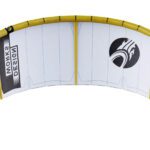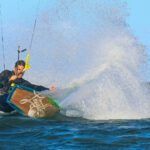
Kitesurfing tricks and coordination
Introduction:
In my experience as a photographer and kitesurfer, I have realized that something greatly influences when doing or performing a trick correctly. I’m not here to give group therapy or anything like that; the idea is to share knowledge and have some use.
There is something in psychologists called motor incoordination, and that is motor de coordination, well this happens when the thought is uncoordinated with the body; many times, this is not noticed or is not felt in other motor skills since it does not require a response momentary but kitesurfing due to its speed or rapid response this difference is very noticeable.
Synchronization
There is something called synchrony or motor synchronization, which is when the thought and the body go from one to the other and the other from one; in short, they are one.
If you do not consider this aspect, it will be more than difficult for you to achieve advanced tricks.
How to Achieve Motor Synchronization
You can do a few things to improve your motor synchronization and achieve advanced tricks in kitesurfing.
Watch videos of the trick, look at the different transitions within the trick, and analyze the balance points, where the kite is, and the rider’s body and position.
This will help you to visualize the trick and understand the movements involved. It will also help you to identify the key points where you need to be coordinated to execute the trick successfully.

Make an account of each movement and the sequence of time between each one, memorize everything, or instead make a movie in your mind of yourself.
This will help you to develop a mental map of the trick and to rehearse it in your mind. The more you rehearse the trick in your mind, the easier it will be to execute it physically.
If the trick requires any extra movement, like taking your board off and then putting it on, practice sitting down or in a comfortable position out of the water.
This will help you get a feel for the movement and ensure you can do it smoothly and without any hesitation.
What is muscle memory based on?
Muscle memory is based on repetition and sensory feedback. When we repeat a movement repeatedly, the brain creates a neural pathway that stores the information about how to perform that movement. Each repetition makes this pathway stronger, making it easier and faster to perform the movement. Sensory feedback also plays a role in muscle memory. When we perform a movement, our senses provide feedback to the brain about how the movement is going. This feedback helps the brain to refine the movement and make it more accurate.
The ability to perform a movement without thinking about it is known as automaticity. Automaticity is a key component of muscle memory. When a movement is automatic, we can perform it without focusing on it, which allows us to focus on other things. For example, we do not have to think about how to pedal or steer when riding a bike. We can simply focus on where we are going.
Muscle memory is important for many activities, including sports, music, and dance. It can also be helpful in everyday activities, such as typing, driving, and using a computer mouse.
It is important to note that muscle memory is not perfect. It can be affected by factors such as fatigue, stress, and injury. It is also possible to lose muscle memory if we do not practice a movement for a long period.
Overall, muscle memory is a complex and fascinating phenomenon. It is a skill that can be developed and improved with practice. It can also be helpful in many different activities, both physical and mental.
If you have some experience and achieve good coordination, you’ll get it the first or second time.
Another aspect to consider is to be calm, calm is part of the trick, and the trick is part of the calm. The Calm will give you the clarity and stability to perform the trick; despair produces anxiety, and with anxiety, you will not be able to achieve anything; that’s when from time to time, we say to ourselves, damn, nothing has come out today.
If someone can help you make video recordings, this will help you incredibly since you will know what you must improve.
I once saw one of the people taking a kitesurfing lesson. After only three hours, he was already standing on the board. And by the end of four weeks, I was doing advanced tricks. I was impressed. How could they learn so fast?
The answer is simple: concentration. When you are learning a new skill, it is essential that you focus on what you are doing. This means paying attention to your body, the kite and the wind. It also means being patient and not getting discouraged if you don’t get it right away.
With concentration, attention and determination, you can learn any skill. So the next time you’re faced with a new challenge, remember to stay focused and not give up.
Remember that your progression will go hand in hand with your skills, practice is essential, and practice is just confidence in what you do.
Conclusion:
Motor synchronization is an important skill for any kitesurfer who wants to progress to advanced tricks. Following the tips above, you can improve your motor synchronization and achieve your kitesurfing goals.
Here are some additional tips that may help you to improve your motor synchronization:
Practice in a safe environment where you can fall without getting hurt. This will help you build confidence and overcome your fear of falling.
Be patient, and don’t give up. It takes time and practice to develop good motor synchronization. Just keep practicing, and you will eventually see improvement.
Author
Latest entries
 WatersportsSeptember 16, 2024Cabrinha Moto X: Enjoy the Ride
WatersportsSeptember 16, 2024Cabrinha Moto X: Enjoy the Ride WatersportsMay 19, 2024Cabrinha 2024 Moto XL Review: The Ultimate Lightwind Kite
WatersportsMay 19, 2024Cabrinha 2024 Moto XL Review: The Ultimate Lightwind Kite WatersportsDecember 16, 2023Kiteboarding Travel
WatersportsDecember 16, 2023Kiteboarding Travel WatersportsDecember 14, 2023RED BULL KING OF THE AIR 2023
WatersportsDecember 14, 2023RED BULL KING OF THE AIR 2023




